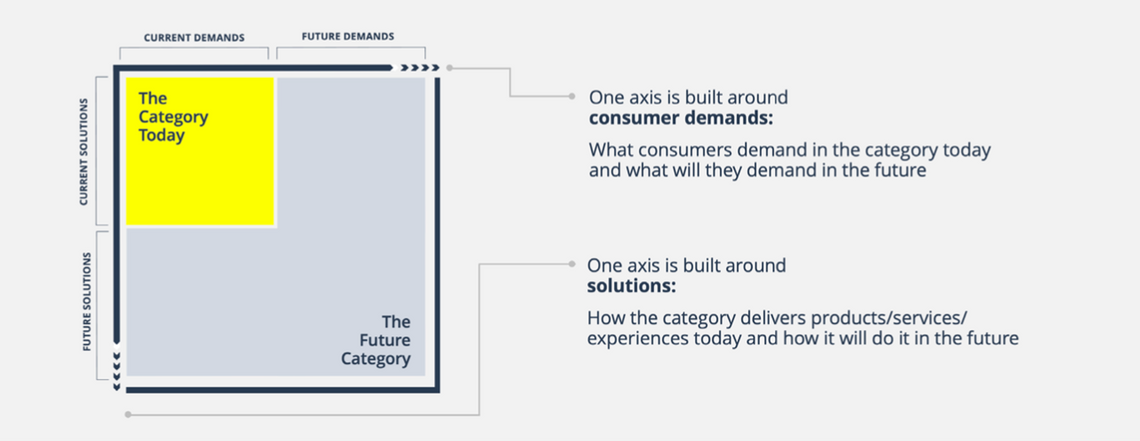We need a new narrative for FMCG innovation
There is a prevailing narrative that most innovation fails: the figure that is often quoted is that 95% fail. But is it true?

There is a prevailing narrative that most innovation fails: the figure that is often quoted is that 95% fail. But is it true? If we think about it logically, it doesn’t make sense. If most innovations fail, why would anyone take the risk? Perhaps we are all hoping to be in that elusive 5%, although with odds like that, most rational people – and companies – would steer clear. However, there is evidence that most companies perceive innovation as valuable and important and, conversely, see failing to innovate and keep up with consumer shifts or competitor activity as a risk.
We manually reviewed the annual reports of the largest 20 publicly owned FMCG companies in the world and found that innovation is at the top of the CEO agenda and is a key message for investors. Furthermore, companies are willing to invest heavily in innovation and are typically getting great returns. For example, in FY22, AB InBev realised 5 billion USD in revenue from innovations introduced over the past three years. This is against total revenues of 57.8 billion USD, which means that innovation accounted for just under 9% of revenues.
If 95% is wrong...
There is also some evidence to suggest that the real failure rate is much lower than 95% – around 45% for consumer goods, according to a 2022 paper by academic Ireneusz P. Rutkowski from the Poznan University of Economics and Business in Poland. Part of the problem is that it all depends on how we define innovation and failure. Are we thinking about innovation as transformative, disruptive horizon three development, or does it include smaller-scale core innovations, renovations or tweaks to existing products? And which metrics are we using to assess whether an innovation has succeeded or failed? Retail hurdle rate, new customer acquisitions, sales growth in year two, NPS? Failure can depend on when and how we measure it.
And what is the problem?
Does it really matter if there is a widespread belief that innovation fails? We believe it does as it can create an organisational culture in which it is difficult for innovators to succeed. Leadership doesn’t believe in innovation, which leads to underinvestment. Marketing and sales don’t believe in it, which leads to a lack of support for new products. And then failure becomes a self-fulfilling prophecy.
Trying to balance the excitement and importance of innovation with the failure narrative is hard. This tension can create a range of issues, such as the following:
Strategic fuzziness: an unwillingness to make difficult choices; companies hedge their bets.
Data gluttony: when there is uncertainty, the answer is so often to get more data – which leads to overwhelm.
Science-athon: the temptation can be to roll out scientific and technological capabilities even if there is no evidence that the output will create value.
Concept erosion: you start out with a defined idea, but as it goes through the innovation journey, it is progressively chipped away with compromises until the outcome bears little relation to the original concept.
Sink or swim: and then, at launch, companies tend to burden all introductions with a similar set of sales KPIs, regardless of strategic objective.
We argue that it is time to change the narrative around innovation, do away with the failure myth and adopt a new approach.
A new, value-based narrative
We reject the idea that ‘most innovation fails’ in favour of the idea that ‘innovation that creates future consumer value will succeed.’ If we are to unlock future consumer value through innovation, we need to do two things:
Know what people want, need or aspire to, now and in the future - demands.
Create what people value by developing products and experiences to satisfy these needs - solutions.

Your category today is an expression of the value created by meeting people’s current needs with the solutions available now. Your future category is an expression of the potential value that can be created by meeting an infinitely more diverse set of needs with an infinitely more diverse set of solutions. These spaces are dynamic as well as infinite – yesterday's future is today’s present.
A winning mindset
The four quadrants resulting from these vectors enable us to think differently about how to approach the innovation challenge. Understanding each quadrant helps organisations prioritise resources, structure teams, and develop the innovation mindset that will win through. Our latest white paper, Unleashing Innovation, goes into more detail about the quadrants, giving you practical ways to create value in each.
It’s time we stopped creating toxic environments for innovators and focused on the amazing work they do. If you are suffering from strategic fuzziness or data gluttony, struggling to get buy-in from senior teams or failing to get marketing support for concepts once launched, your organisation may need to ditch the failure myth and adopt a value-based narrative instead.
Adam Rowles
Marketing and Business Development Director at The ForgeAgency marketing and business development lead with 14 years' experience gained at agencies and consultancies spanning right across the marketing mix - research, insight, brand strategy, design, digital, strategy, media and advertising.


